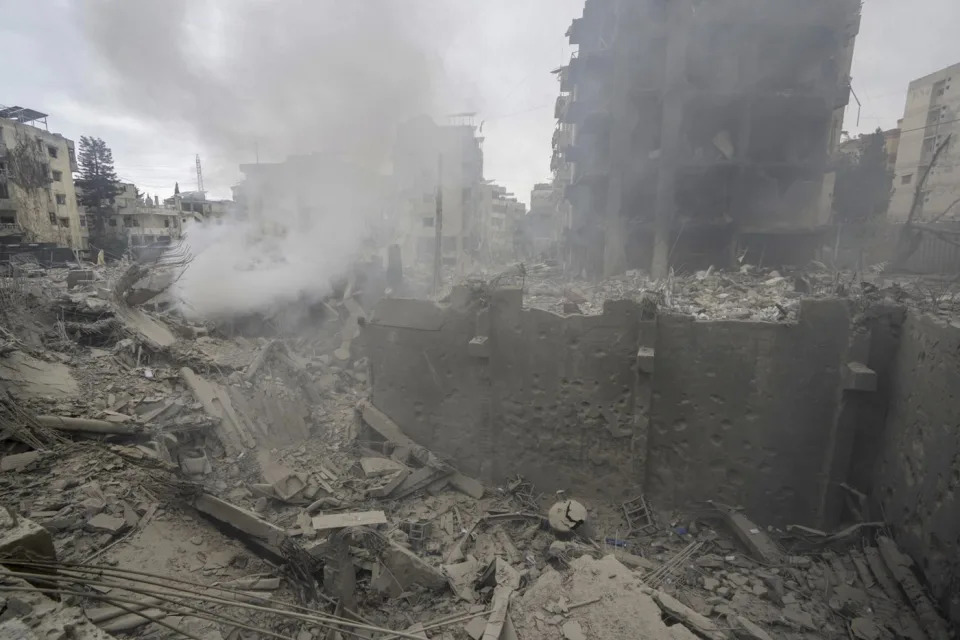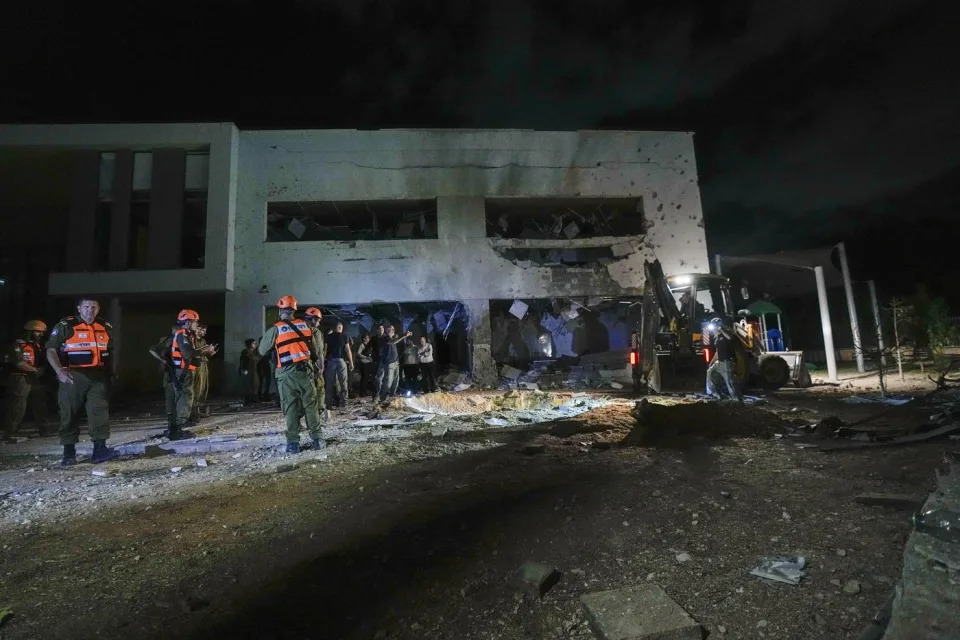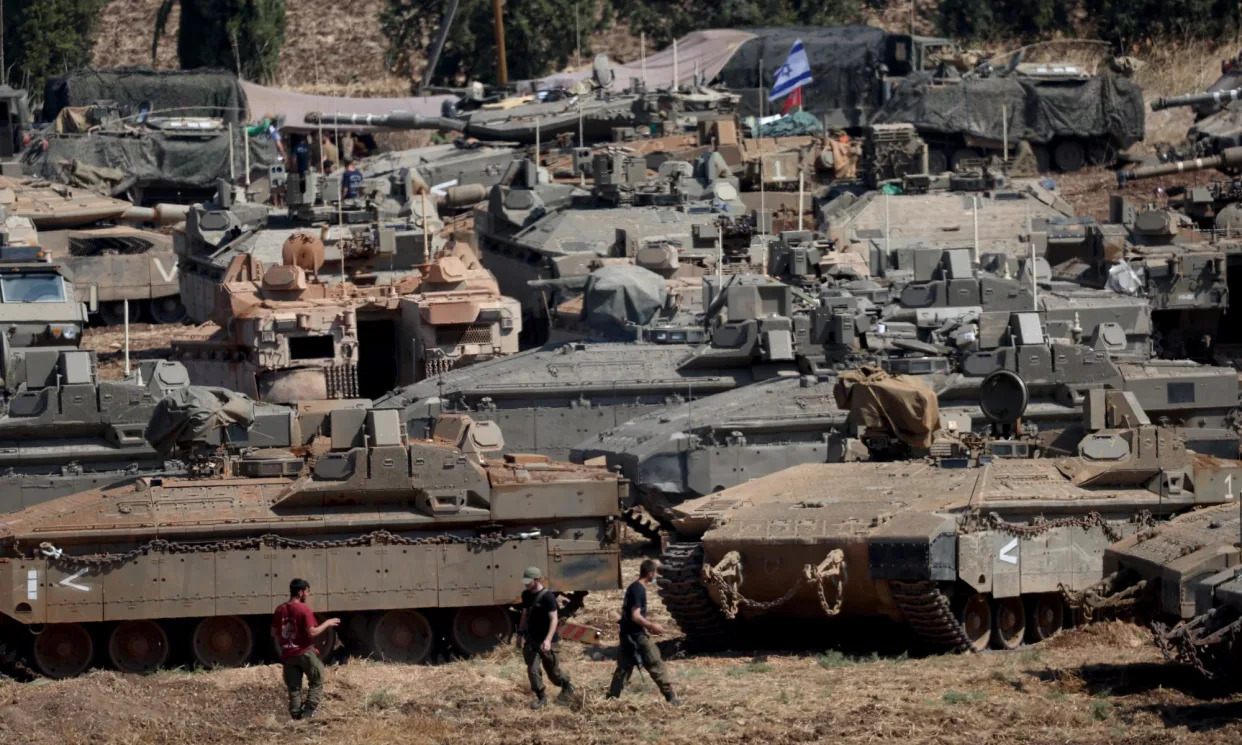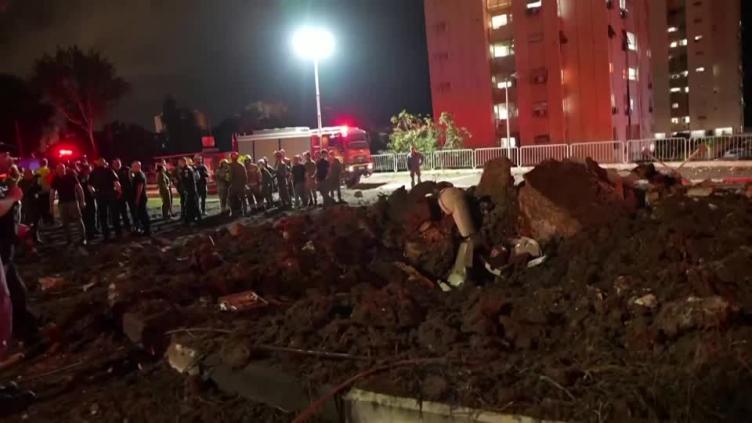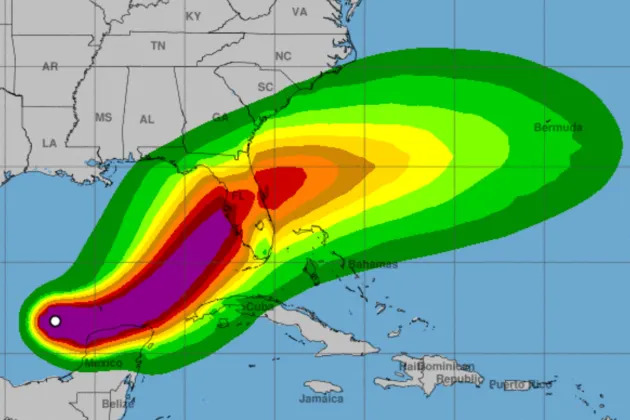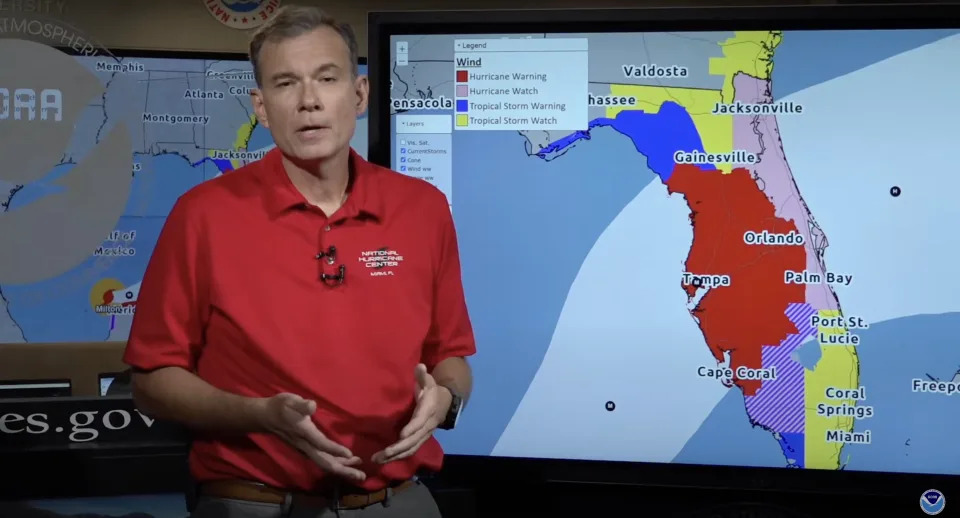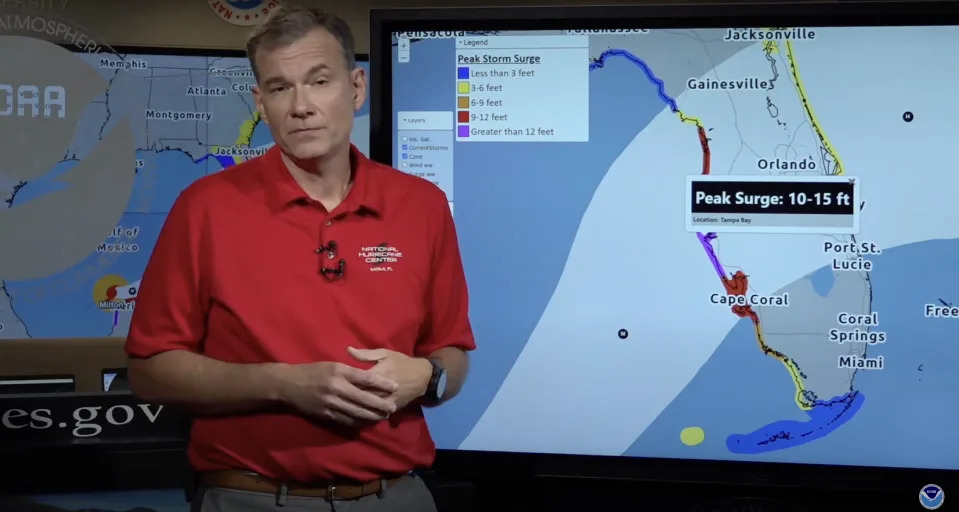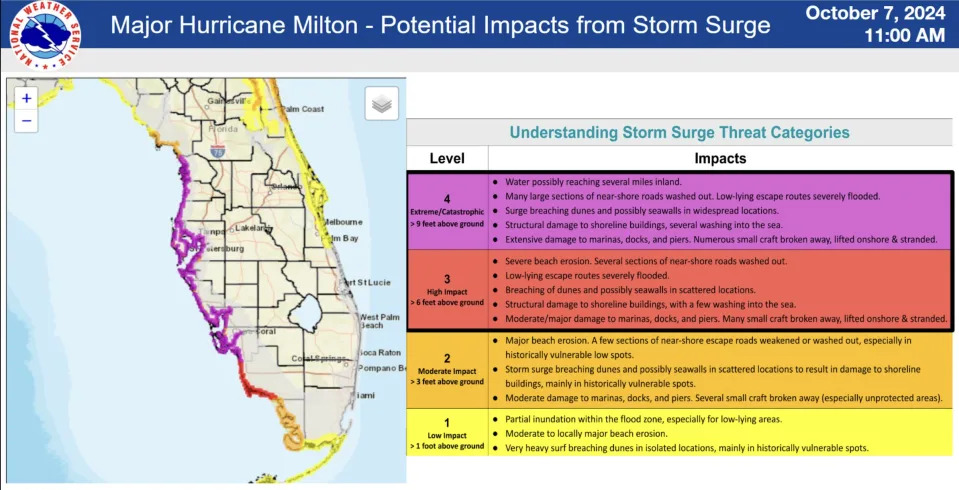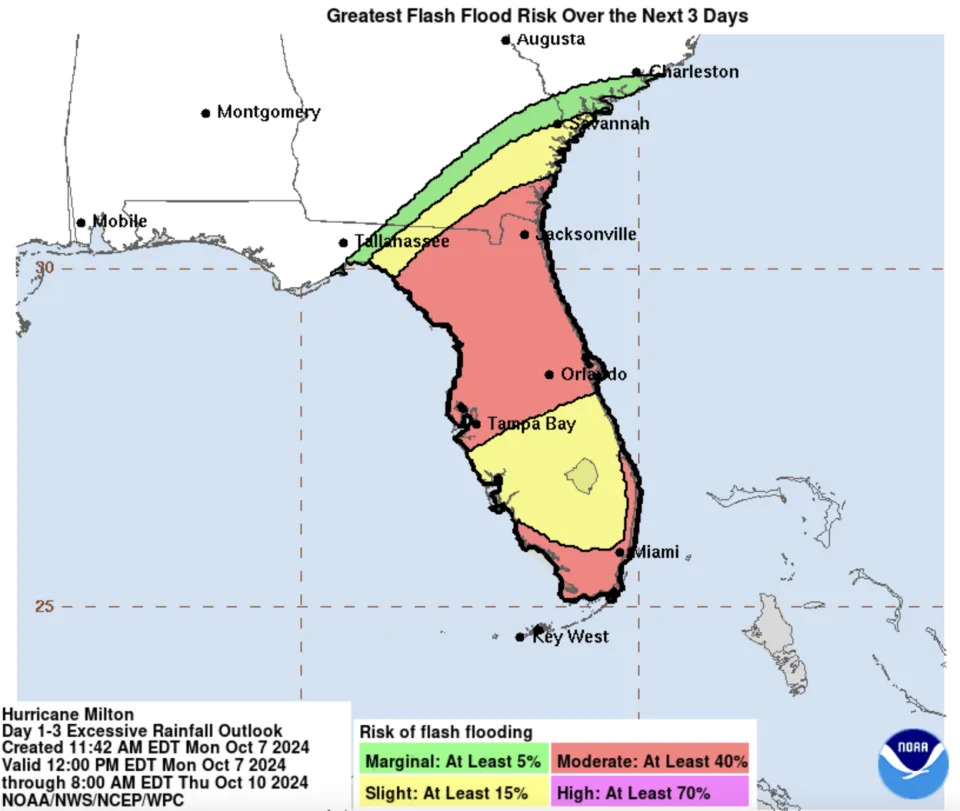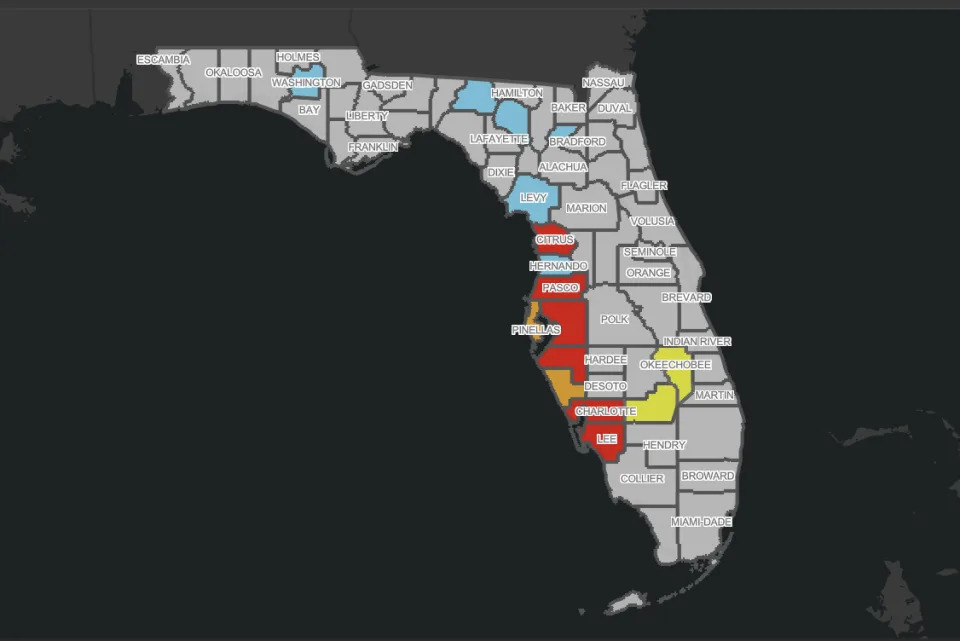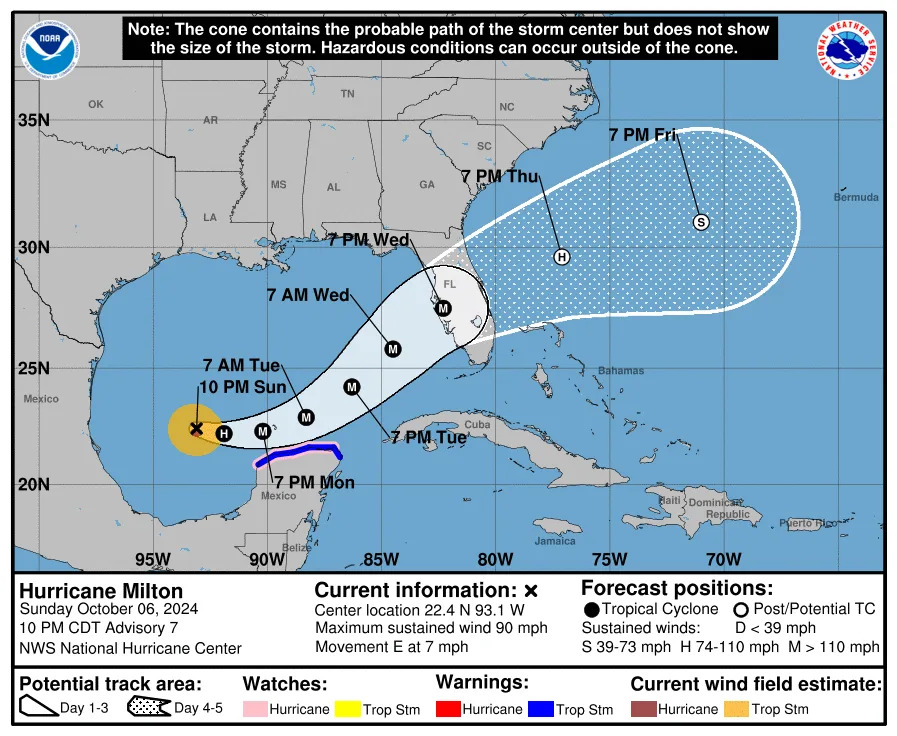Human rights NGOs say social media platforms continue to censor pro-Palestine content
Anna Desmarais
Mon 7 October 2024

Human rights NGOs say social media platforms continue to censor pro-Palestine content
Human rights NGOs say little progress has been made to stop the digital censorship of pro-Palestine voices on social media networks, one year into the escalation of the Israel-Hamas conflict.
The war broke out last year when Palestinian militant group Hamas launched an attack in southern Israel where they took 250 people hostage and killed 1,200.
Israel responded with air strikes and by sending ground troops to the Gaza Strip, with the war killing around 42,000 Palestinians, according to the Gaza health ministry.
Since the October 7 attack, the Palestinian Observatory of Digital Rights Violations has recorded more than 1,350 instances of online censorship from major platforms through an open call on their website through July 1, 2024, with most of the reports related to Meta, TikTok, X, and Youtube.
The sample includes stories of suspensions, content takedowns, and account restrictions.
Related
One year on: How Hamas' attack on Israel triggered a regional conflict in the Middle East
The Arab Center for the Advancement of Social Media (7amleh) interpreted these results in a September report as a “deliberate decision” to “aggressively over-moderat(e) Palestine-related content”.
“When online platforms allow hate speech and incitement on their platforms, they could be guilty of helping spread content that dehumanises Palestinians and justifies their collective punishments,” the report reads.
Pro-Israeli groups have, however, criticised what they say are attempts to roll back social media restrictions on antisemitism.
How content or accounts get removed
The NGO Human Rights Watch previously documented how users had their content blocked or removed by Meta in a report released last December.
Users would first have a single post, story or comment that referenced Palestine reviewed then removed with little to no explanation pointing to a specific policy breach, according to Rasha Younes, a senior researcher with Human Rights Watch.
Then, Younes said they heard from users who had their accounts restricted from commenting on other pro-Palestine content or disabled for anywhere from 24 hours to three months.
There are others who described being “shadowbanned,” the idea that their posts were less visible to other users on both Instagram and Facebook, Younes continued.
Related
Rallies held across Europe ahead of Hamas-Israel war anniversary
Younes said users who tried to challenge these restrictions found the “we made a mistake?” button disabled, which she believes “violates Meta’s own policies”.
For those that are blocked, Younes said they “might not have any place to go” to express their political activism or lived reality during the conflict.
Both HRW and 7amleh’s reports rely on direct user experiences, but researchers from both groups want to push social media companies like Meta to release data about which posts are being blocked by automatic moderation so they can do more in-depth research.
“What we’re seeing is people who work in these companies, they want these changes … but unfortunately they are not the decision-makers, so they can’t really change anything,” Taysir Mathlouthi, 7amleh’s EU Advocacy Officer, told Euronews Next.
Tech companies ‘refining their approach’ during the conflict
Meta and TikTok declined to answer any direct questions about their content moderation policies and instead referred Euronews Next to recent reports about their responses.
In Meta’s report from September, the company said they’ve been refining their approach to “reflect the changing dynamics” of the humanitarian crisis in Gaza and hostage-taking by Hamas.
But, the company admitted that some of their policy decisions, like lowering thresholds for automated enforcement, “inadvertently limit(s) discussion of critical world events”.
A Meta spokesperson told Euronews last year, however, that the HRW report “ignores the realities of enforcing our policies globally during a fast-moving, highly polarised and intense conflict,” adding that “the implication that we deliberately and systemically suppress a particular voice is false”.
Related
Meta’s social media platforms are systemically censoring pro-Palestine content, NGO finds
For TikTok, the company said in an October 2 report they’ve taken down 4.7 million videos and suspended 300,000 livestreams between October 7, 2023 and September 15, 2024, for either promoting Hamas, hate speech or misinformation.
Earlier this year, the company said they added “Zionist” content to their hate speech policy “when it is used … [as a] proxy with Jewish or Israeli identity”.
“This policy was implemented early this year after observing a rise in how the word was increasingly used in a hateful way,” TikTok said.
Euronews Next reached out to YouTube and X but did not receive an immediate reply.
EU urged to ‘pressure’ social media companies
There’s a responsibility that the EU needs to take on as well, even if the conflict isn’t directly within their borders, according to 7amleh’s Mathlouthi.
The European Commission recently passed the Digital Services Act (DSA) which introduced new mechanisms to fight illegal online content, according to a description of the new law.
However, Mathlouthi said there’s no real definition of what the law considers “incitement or harmful content,” which makes it difficult to put pressure on these big companies through the act.
NSW premier says police should be able to ban pro-Palestine protests because they are too expensive
Catie McLeod
Mon 7 October 2024
“We want more regulation, we want more control and we want more transparency and this will never be achieved without pressure."
“We want more regulation, we want more control and we want more transparency and this will never be achieved without pressure,” Mathlouthi said.
Last October, the EU asked X, Meta and TikTok for information about how they were regulating content about the conflict. That’s the first step in figuring out whether a full investigation is needed under the DSA.
In December, the European Commission opened formal proceedings against X to address, among other concerns, “the dissemination of illegal content in the context of Hamas’ terrorist attacks against Israel,” a press release said at the time.
The EU has since launched formal investigations against Meta, TikTok and TikTok Lite for other possible DSA breaches but did not explicitly mention Israel or Palestine-related content as one of their reasons.
Euronews Next reached out to the European Commission to confirm whether the information they received from Meta and TikTok about their moderation policies on the Israel-Hamas war was satisfactory but did not receive an immediate reply.
Catie McLeod
Mon 7 October 2024
Guardian Australia

Protesters in Hyde Park on Sunday 6 October. NSW premier Chris Minns says weekly rallies are too expensive for police.Photograph: Don Arnold/Getty Images
The New South Wales premier, Chris Minns, says policing pro-Palestine protests has cost the state $5m this year and the force should be able to shut them down because of the “huge drain on the public purse”.
Minns has ordered a review of police resources used at the protests, which have taken place in Sydney’s CBD every weekend for the past year following the Hamas attacks on 7 October and Israel’s subsequent strikes on Gaza.
But critics on Tuesday said the premier was continuing to “disregard human rights and civil liberties” and the state was trying to “criminalise protesters”.
Minns told 2GB radio that police resources were “stretched” and he believed taxpayers would want the force to deal with crime instead of patrolling pro-Palestine rallies.
“When you’ve got someone putting in an application every seven days for 51 weeks to march through Sydney streets, this is costing millions of dollars, and I think taxpayers should be in a position to be able to say, we would prefer that money spent on roadside breath testing, domestic violence investigations [and] knife crimes,” the premier said.
“It’s my view that police should be able to be in a position to deny a request for a march due to stretched police resourcing.”
NSW police had a significant presence at Sunday’s pro-Palestine protest in Hyde Park and a vigil on Monday after last week taking supreme court action to try to stop the demonstrations.
Minns had argued the Sunday rally and the candlelight vigil on Monday should not go ahead.
Amal Naser and Josh Lees from the Palestine Action Group, which organises the weekly rallies, accused Minns and “others in the political and media establishment” of participating in a “racist scare campaign”.
“Over the weekend we saw thousands of police deployed in an outrageous and racist law and order campaign which sought to criminalise protesters who have been peacefully rallying for 12 months,” they said in a statement on Tuesday.
“The government is terrified that dissent to Israel’s genocide has never been so large and want to repress us so we cannot utilise the masses and people power to stop this genocide.
“We remind you, that after 7 October [2023] NSW premier Chris Minns declared that we will never march the streets. We defied this and shut down the streets for 52 consecutive weeks.”
The Israeli government maintains its military operations are a legitimate response to the Hamas attacks and has dismissed allegations it is committing genocide as “false” and “outrageous”.
NSW police have charged two men for allegedly displaying Nazi symbols at Sunday’s rally but said overall they were pleased with the behaviour of the crowd – which they estimated at 10,000 people.
In NSW, the police commissioner must approve a permit known as a “form 1” or a “notice of intention to hold a public assembly” lodged by organisers for a protest to be considered lawful.
Minns on Tuesday said police should be able to deny a form 1 application based on the cost to the force of policing the event.
The permit system allows organisers to disobey laws against blocking traffic, for example. Last week, the NSW Council of Civil Liberties president, Lydia Shelly, said it was an “international embarrassment” that “lent itself to litigation”.
Shelly on Tuesday said charging people to stage protests would create a “two-tiered” system where only the wealthy could demonstrate.
“Singling out protests as a financial burden completely flies in the face of government obligations under human rights laws and protections for ordinary citizens,” she said.
“Just when you think that things couldn’t be worse in relation to a premier that seems to completely disregard human rights and civil liberties in this state, an idea like this pops up.”
Minns said the government had to “make decisions about where police are spending their funds”.
“If this is taking place every single weekend, it’s coming at the expense of some other law enforcement across the state,” he said.
“If you’re putting on a rock concert on the weekend … you would have to pay NSW police in order to keep the public safe.”
NSW police provides most policing services free of charge but says some services “go beyond these responsibilities” so it charges clients a fee.
The system, known as user-pays policing, requires major sporting events, festivals and concerts to pay themselves for police resources.
Related: Guardian Essential poll: more than half of Australians approve of Albanese government’s response to Israel-Gaza war
NSW police have previously been accused of “price gouging” and operating a “rort” that threatened the viability of music festivals because they charged thousands of dollars more than their counterparts in other states to patrol events.
The state opposition leader, Mark Speakman, said the Minns Labor government should change the law to impose user-pays policing charges on all repeat protests.
“Every dollar that’s spent on policing serial protests is a dollar that could be going towards improving the lives of NSW families,” the Liberal leader said on Tuesday.
The NSW Greens justice spokesperson, Sue Higginson, said Minns knew the organisers of the weekly pro-Palestine rallies wouldn’t have the means to cover user-pays fees.
“Threatening to interfere with the right to protest creates a dangerous environment where important voices of democracy are strangled out of existence,” she said

Protesters in Hyde Park on Sunday 6 October. NSW premier Chris Minns says weekly rallies are too expensive for police.Photograph: Don Arnold/Getty Images
The New South Wales premier, Chris Minns, says policing pro-Palestine protests has cost the state $5m this year and the force should be able to shut them down because of the “huge drain on the public purse”.
Minns has ordered a review of police resources used at the protests, which have taken place in Sydney’s CBD every weekend for the past year following the Hamas attacks on 7 October and Israel’s subsequent strikes on Gaza.
But critics on Tuesday said the premier was continuing to “disregard human rights and civil liberties” and the state was trying to “criminalise protesters”.
Minns told 2GB radio that police resources were “stretched” and he believed taxpayers would want the force to deal with crime instead of patrolling pro-Palestine rallies.
“When you’ve got someone putting in an application every seven days for 51 weeks to march through Sydney streets, this is costing millions of dollars, and I think taxpayers should be in a position to be able to say, we would prefer that money spent on roadside breath testing, domestic violence investigations [and] knife crimes,” the premier said.
“It’s my view that police should be able to be in a position to deny a request for a march due to stretched police resourcing.”
NSW police had a significant presence at Sunday’s pro-Palestine protest in Hyde Park and a vigil on Monday after last week taking supreme court action to try to stop the demonstrations.
Minns had argued the Sunday rally and the candlelight vigil on Monday should not go ahead.
Amal Naser and Josh Lees from the Palestine Action Group, which organises the weekly rallies, accused Minns and “others in the political and media establishment” of participating in a “racist scare campaign”.
“Over the weekend we saw thousands of police deployed in an outrageous and racist law and order campaign which sought to criminalise protesters who have been peacefully rallying for 12 months,” they said in a statement on Tuesday.
“The government is terrified that dissent to Israel’s genocide has never been so large and want to repress us so we cannot utilise the masses and people power to stop this genocide.
“We remind you, that after 7 October [2023] NSW premier Chris Minns declared that we will never march the streets. We defied this and shut down the streets for 52 consecutive weeks.”
The Israeli government maintains its military operations are a legitimate response to the Hamas attacks and has dismissed allegations it is committing genocide as “false” and “outrageous”.
NSW police have charged two men for allegedly displaying Nazi symbols at Sunday’s rally but said overall they were pleased with the behaviour of the crowd – which they estimated at 10,000 people.
In NSW, the police commissioner must approve a permit known as a “form 1” or a “notice of intention to hold a public assembly” lodged by organisers for a protest to be considered lawful.
Minns on Tuesday said police should be able to deny a form 1 application based on the cost to the force of policing the event.
The permit system allows organisers to disobey laws against blocking traffic, for example. Last week, the NSW Council of Civil Liberties president, Lydia Shelly, said it was an “international embarrassment” that “lent itself to litigation”.
Shelly on Tuesday said charging people to stage protests would create a “two-tiered” system where only the wealthy could demonstrate.
“Singling out protests as a financial burden completely flies in the face of government obligations under human rights laws and protections for ordinary citizens,” she said.
“Just when you think that things couldn’t be worse in relation to a premier that seems to completely disregard human rights and civil liberties in this state, an idea like this pops up.”
Minns said the government had to “make decisions about where police are spending their funds”.
“If this is taking place every single weekend, it’s coming at the expense of some other law enforcement across the state,” he said.
“If you’re putting on a rock concert on the weekend … you would have to pay NSW police in order to keep the public safe.”
NSW police provides most policing services free of charge but says some services “go beyond these responsibilities” so it charges clients a fee.
The system, known as user-pays policing, requires major sporting events, festivals and concerts to pay themselves for police resources.
Related: Guardian Essential poll: more than half of Australians approve of Albanese government’s response to Israel-Gaza war
NSW police have previously been accused of “price gouging” and operating a “rort” that threatened the viability of music festivals because they charged thousands of dollars more than their counterparts in other states to patrol events.
The state opposition leader, Mark Speakman, said the Minns Labor government should change the law to impose user-pays policing charges on all repeat protests.
“Every dollar that’s spent on policing serial protests is a dollar that could be going towards improving the lives of NSW families,” the Liberal leader said on Tuesday.
The NSW Greens justice spokesperson, Sue Higginson, said Minns knew the organisers of the weekly pro-Palestine rallies wouldn’t have the means to cover user-pays fees.
“Threatening to interfere with the right to protest creates a dangerous environment where important voices of democracy are strangled out of existence,” she said
“We want more regulation, we want more control and we want more transparency and this will never be achieved without pressure."
“We want more regulation, we want more control and we want more transparency and this will never be achieved without pressure,” Mathlouthi said.
Last October, the EU asked X, Meta and TikTok for information about how they were regulating content about the conflict. That’s the first step in figuring out whether a full investigation is needed under the DSA.
In December, the European Commission opened formal proceedings against X to address, among other concerns, “the dissemination of illegal content in the context of Hamas’ terrorist attacks against Israel,” a press release said at the time.
The EU has since launched formal investigations against Meta, TikTok and TikTok Lite for other possible DSA breaches but did not explicitly mention Israel or Palestine-related content as one of their reasons.
Euronews Next reached out to the European Commission to confirm whether the information they received from Meta and TikTok about their moderation policies on the Israel-Hamas war was satisfactory but did not receive an immediate reply.
